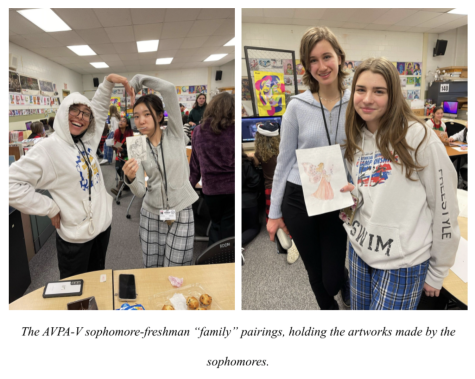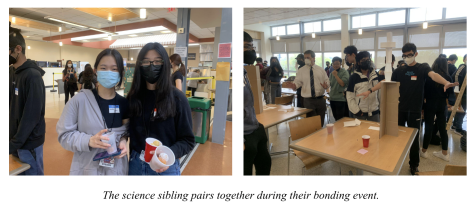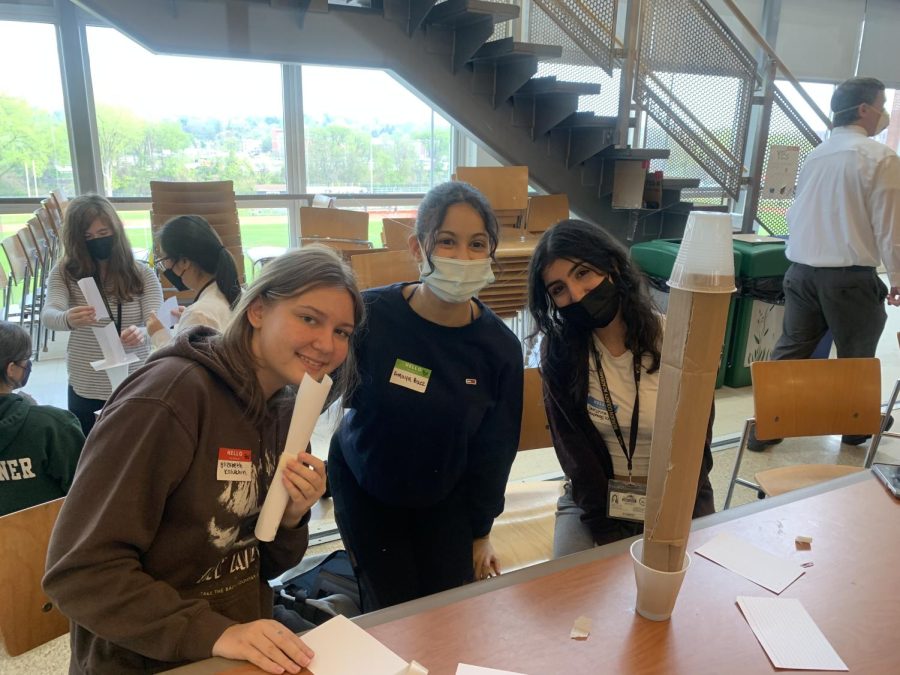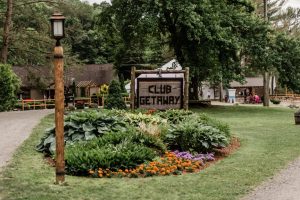Academy Mentorship Programs at BCA
May 3, 2023
Life at BCA is no easy adjustment. Underclassmen are still getting accustomed to balancing studies and social life– but the mentorship programs at BCA offer a solution to this issue. By connecting underclassmen with an upperclassman mentor, underclassmen get to speak with someone who has been in their shoes and can offer valuable advice. These partnerships benefit the upperclassmen as well, who may otherwise find it harder to greet and form connections with the newer BCA students. Each academy has its own unique mentorship program to connect their upper and underclassmen.
For example, the AVPA-V sophomores choose freshman “children” by preparing artworks for them to choose from. Without knowing who made which artwork, the AVPA-V class of 2026 each picked a piece and were then assigned to the sophomore who made that artwork.

“I definitely think that, while I love the system, there’s still so much to change about it.” says Ada Alp, an AVPA-V sophomore. “I think the main goal should be for this system to bring us closer and while it does do that, I know people who have only really talked to their parent once and sometimes they don’t even know who they are.”
Ada and numerous other students have commented on this flaw of the mentorship programs– that after pairings are made, little communication occurs between these under and upperclassmen pairings.
“I think creating an environment where older parents in the family tree reach out to their children a lot more and interact with the younger AVPA-V kids is a way we could improve the shyness that everyone seems to have around each other,” Ada says.
Overall, Ada does appreciate the AVPA-V family tree system, and says that it is helpful because older AVPA-V students can give younger students insight on the classes and curriculum.
ABF students have a mentor system similar to the AVPA-V classes. At the end of freshman year, ABF students write letters to their future mentees. During the beginning of their sophomore year, mentor-mentee pairings are made based on personalities and interests. These freshman and sophomore duos later meet each other at an ABF breakfast event.
“The ABF mentor system is designed to provide a freshman with the guidance of an ABF sophomore, someone who was very recently in their position,” says Salma Farag, an ABF sophomore. “It is a way to bridge the gap between the two years, and provide a chance to network with and get to know upperclassmen.”
Again however, the struggle with having a mentee is to maintain communication with them. Brannon Zee, another sophomore in ABF, says, “I think there needs to be more done to connect mentors and mentees. I haven’t spoken to my mentee since the breakfast, so adding more avenues for communication or academy-wide meetings could make it possible to have more connections.”
While the AVPA-V and ABF academies make it mandatory for each student to get a mentee, AMST works a bit differently. Their system is voluntary, where AMST upperclassmen sign up to become a mentor. The mentors are given duties, such as checking up on their underclassmen buddy every few months, or giving AMST-specific advice based on their specializations. Officially, the program began last year, although an informal version existed online two years ago.
The Academy Chronicle spoke with Tanni Sethi, a senior in AMST who co-founded the mentorship program. “The benefits of having a mentorship system are that now, underclassmen are informed on a wide variety of topics like EMT schooling, research, sports, and other BCA specific activities.” Tanni also says that, because the AMST mentorship primarily operates through discord and a google drive, all information is easy for anyone to access.
Despite the many benefits that mentorship programs offer, an issue that many have pointed out with these systems is the lack of communication between mentors and mentees that occurs after their initial meeting. AAST addresses these common issues with their “science sibling” bonding events.

“Last year, we had a bonding event for the science sibling pairings,” says Andrea Kim, the current AAST junior rep. “We announced the pairings at the event, and after everyone found their sibling, they did a building activity together.”
“I think we could improve our system by having even more bonding events. It’s difficult to schedule a time where everyone is available to come.” Andrea says there is a lot of struggle to find a class or time slot where 200 people can be excused to attend. To accommodate for this, last year’s science siblings event was held during club hours.
Even with the struggles that come with planning events, small moments like these really push for relationships to strengthen, and are no doubt helpful to these mentors and mentees.
No matter how intense or overwhelming life at BCA gets, it is comforting to know that there is a wide network of upperclassmen to lend a helping hand and it is thanks to the people who maintain these mentorship systems that students have access to such a resource.





